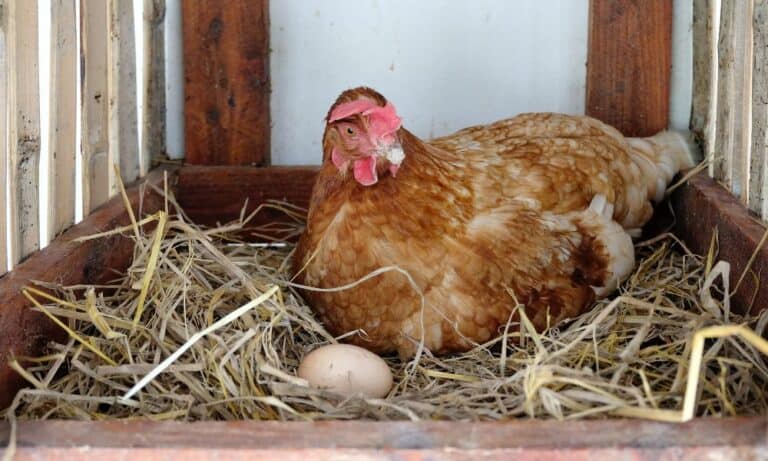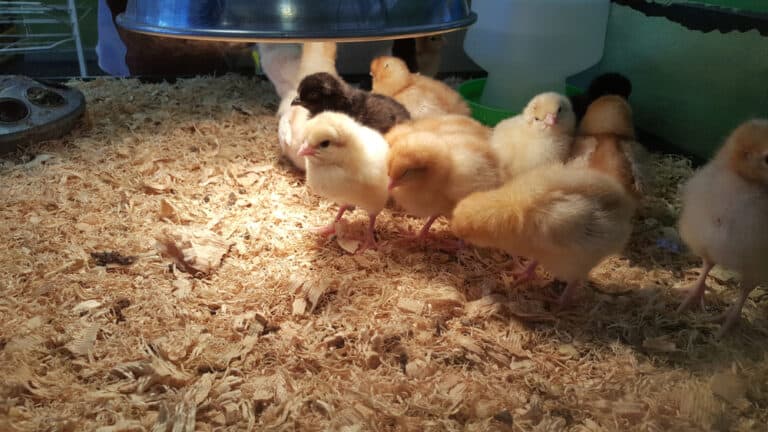Are you wondering if there are some telltale signs that distinguish a fertilized egg from a non-fertile one?
Well, the good news is that there are, and it doesn’t require a lot to identify them. So if you’re new to rearing chickens or just started keeping a few in your backyard, knowing these signs will help you keep those fertilized eggs out of your pans.
To tell if an egg is fertilized, you can crack it open and observe if there are any clusters surrounding its yolk, which is the first sign of fertilization. Likewise, you can use candling to check for a black patch and veins that indicate an embryo is forming or float it in water to confirm if there’s a fully formed chick inside it.
In this post, we’ll discuss these methods in detail and point out signs to look out for. We’ll also answer some common questions concerning how to tell if an egg is fertilized.
How Is an Egg Fertilized?
Before we proceed to learn how to identify a fertilized egg, let’s start from the very beginning by understanding how eggs become fertilized.
When a rooster mounts a hen during mating, it releases sperm from its reproductive organ, called a cloaca, to the hen’s reproductive organ, called an oviduct. Typically, this mating process lasts only a few seconds and hardly involves penetration.
After its release, the sperm travels through the hen’s reproductive system for a few days, passing through the shell gland, isthmus, and magnum before making a final stop at the infundibulum, which is pretty much where fertilization takes place.
The hen’s ovary, which functions as a production site for yolks, will readily produce one yolk every 24 hours on average. This means that a healthy hen will produce one egg almost every day, whether fertilized or not. Interestingly, the hen’s ovary is connected to the infundibulum, making it easy for any yolk it releases to make its way to where the sperm is.
Once the yolk makes contact with the sperm inside the infundibulum, it gets fertilized and travels on the same path the sperm follows. However, the difference is that the yolk moves in reverse, first arriving at the magnum to be covered with egg white before getting to the shell gland, where it is fully covered with a hard shell.
As the hen lays this fully formed egg through its vent, its reproductive system prepares to begin another egg production cycle.
Note: Not all fertilized chicken eggs turn into developed chicks. Some may not complete full development due to unsuitable conditions during incubation, physical damage, or diseases.
How Can You Tell if an Egg Is Fertilized?
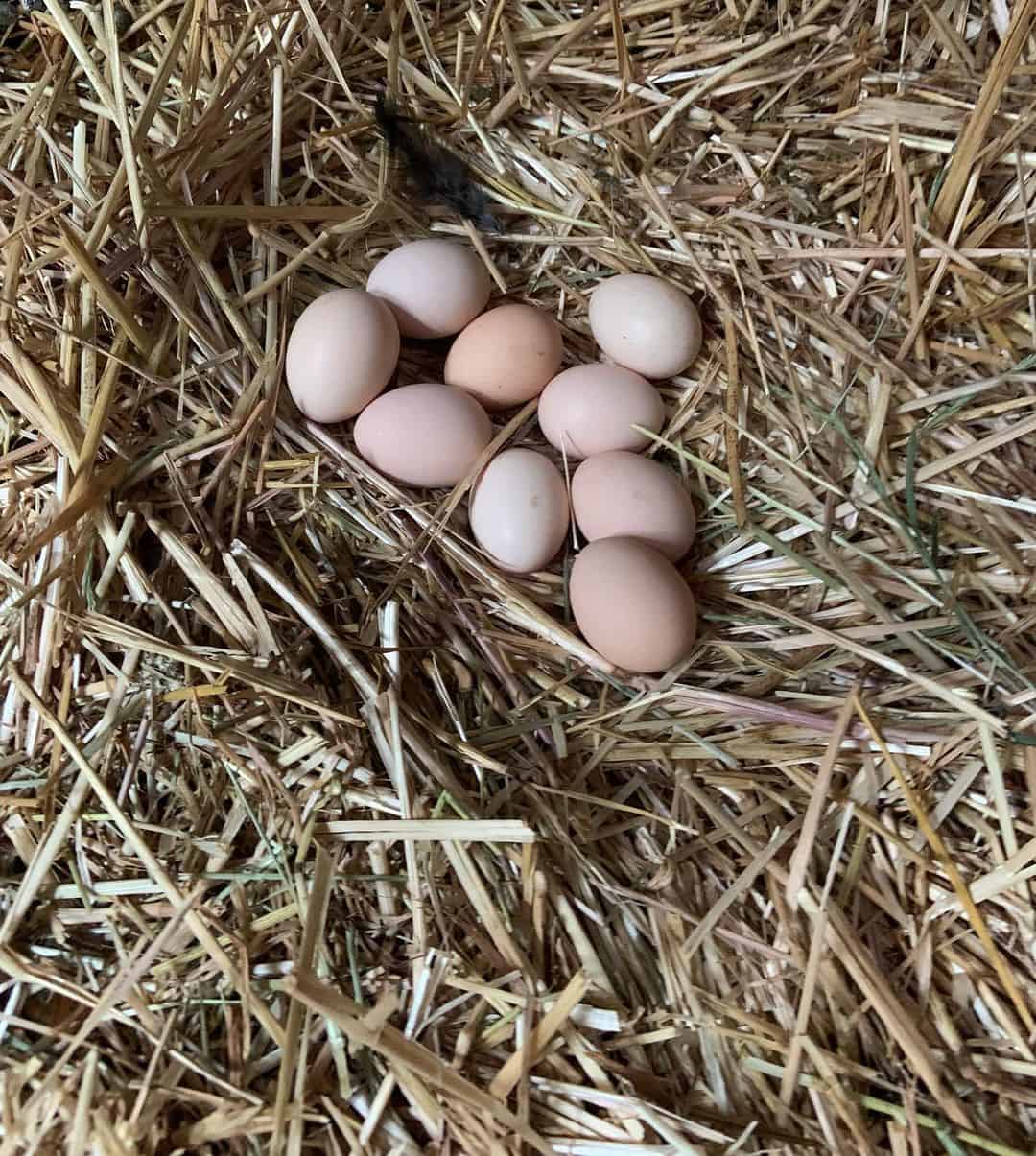
Fertile and non-fertile eggs look the same on the outside, and it’s impossible to tell them apart by merely looking at their shells. Most of the time, you’ll need to see the inside to spot the differences. Here are three simple methods you can use to tell if an egg is fertilized:
1. You Can Crack an Egg Open
Although not the most preferred method, as some may feel it’s a waste of a fertile egg, cracking an egg open has proven to be a sure way to check if the rest of your hen’s clutch is fertilized, especially in the early stages.
This method is pretty straightforward and would only require you to break an egg into a bowl and check for the germinal disc, usually appearing in the form of clusters as a small white circle on the yolk surrounded by another white ring. When incubated, it develops into a baby chick.
This method comes in handy for those who want to speed up the incubation process by confirming early enough that their hens’ eggs are fertile.
2. You Can Candle an Egg in the Dark
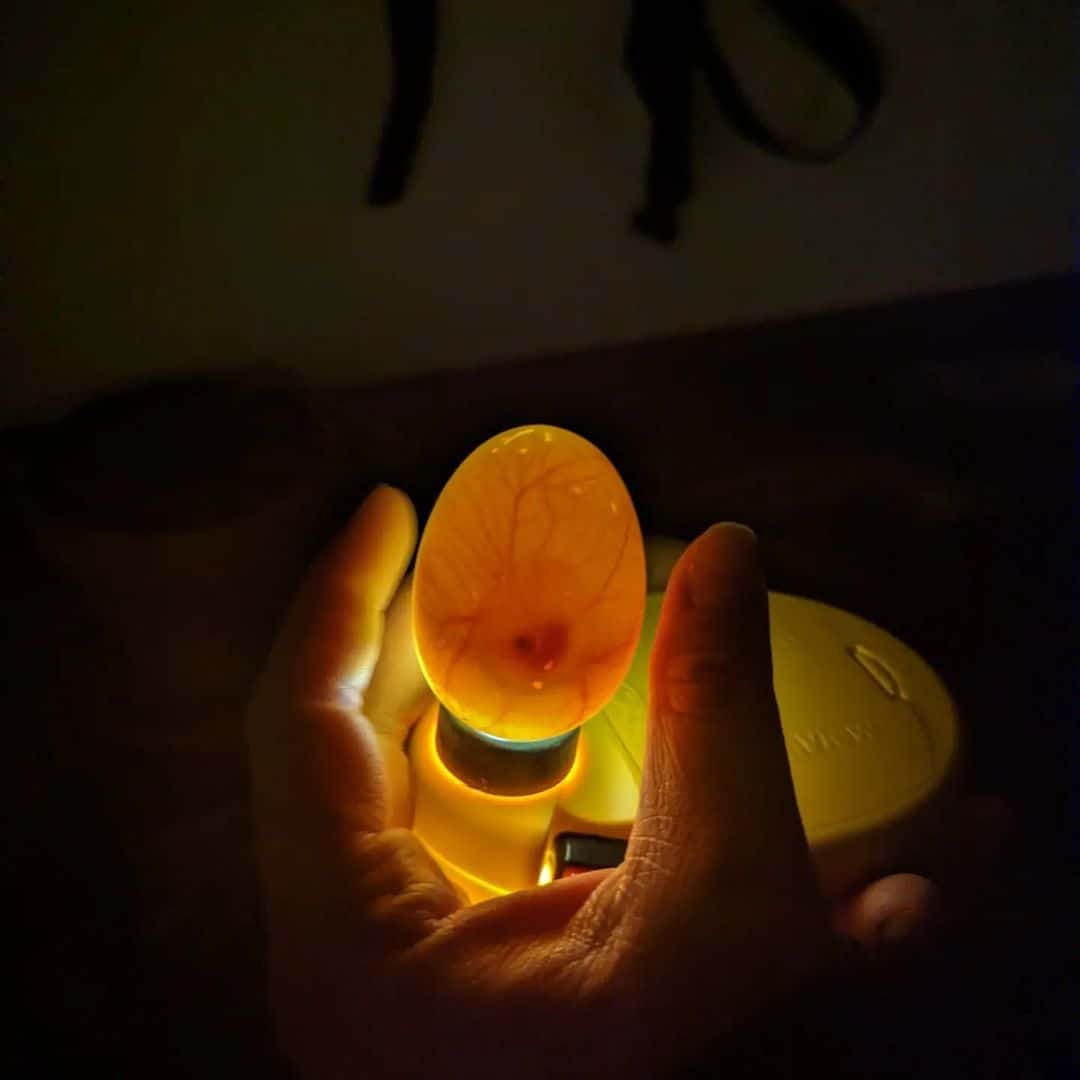
Candling is an age-old method that was initially done using a candle to determine if an egg is fertile. In recent times, however, people have opted for flashlights in place of candles, but that doesn’t reduce its effectiveness. If anything, using a flashlight to carry out this method makes it even easier.
In candling, you’ll need to get in a dark area, put on a flashlight, place it under a large part of the egg and observe for a dark spot or patch on its lit area, typically at its center. If your egg is fertile, you’ll notice some veins connecting with a dark patch, making the egg appear somewhat opaque.
On the other hand, a non-fertile egg will only show a yellow yolk with no veins or patches that indicate life is being formed. You can carry out this method at different times during the incubation period but ensure you do it on the fourth, tenth, and seventeenth day because these mark the beginning of different stages in the embryo’s development.
While you’ll only see a dark spot and tiny blood vessels on the fourth day, candling on the tenth day reveals much more signs of development. In this stage, you notice a developing embryo with some visible parts like a head, tail, eyes, and what may look like a beak. On the seventeenth day, however, you should be able to see a fully formed chick.
3. You Can Float an Egg in Water
Although this method isn’t the best to use if you want to determine if an egg is fertilized during the early stage, as it’s usually carried out at the end of the 21 days incubation period, it’s still useful, especially if you want to tell if an egg contains a fully formed chick or not.
To carry out the float method, ensure the water you intend to use is clean and warm at about 75 to 85 degrees Fahrenheit. Ensure the water is still before placing the egg into it. Then, with the egg inside the water, carefully observe if it floats or sinks. An egg that sinks indicates it’s infertile and was probably so from the beginning.
However, if it floats, try observing the direction in which it does so. For example, an egg that floats vertically with its narrower end pointing downward is one with an embryo that possibly died at some point in its incubation period or was never fertilized in the first place.
On the flip side, if it floats horizontally, it means there’s a fully formed chick inside it. In this case, you’ll need to take it out of the water carefully, place it back in the incubator and give it some more time to hatch.
Can Hens Lay Fertilized Eggs Without a Rooster?
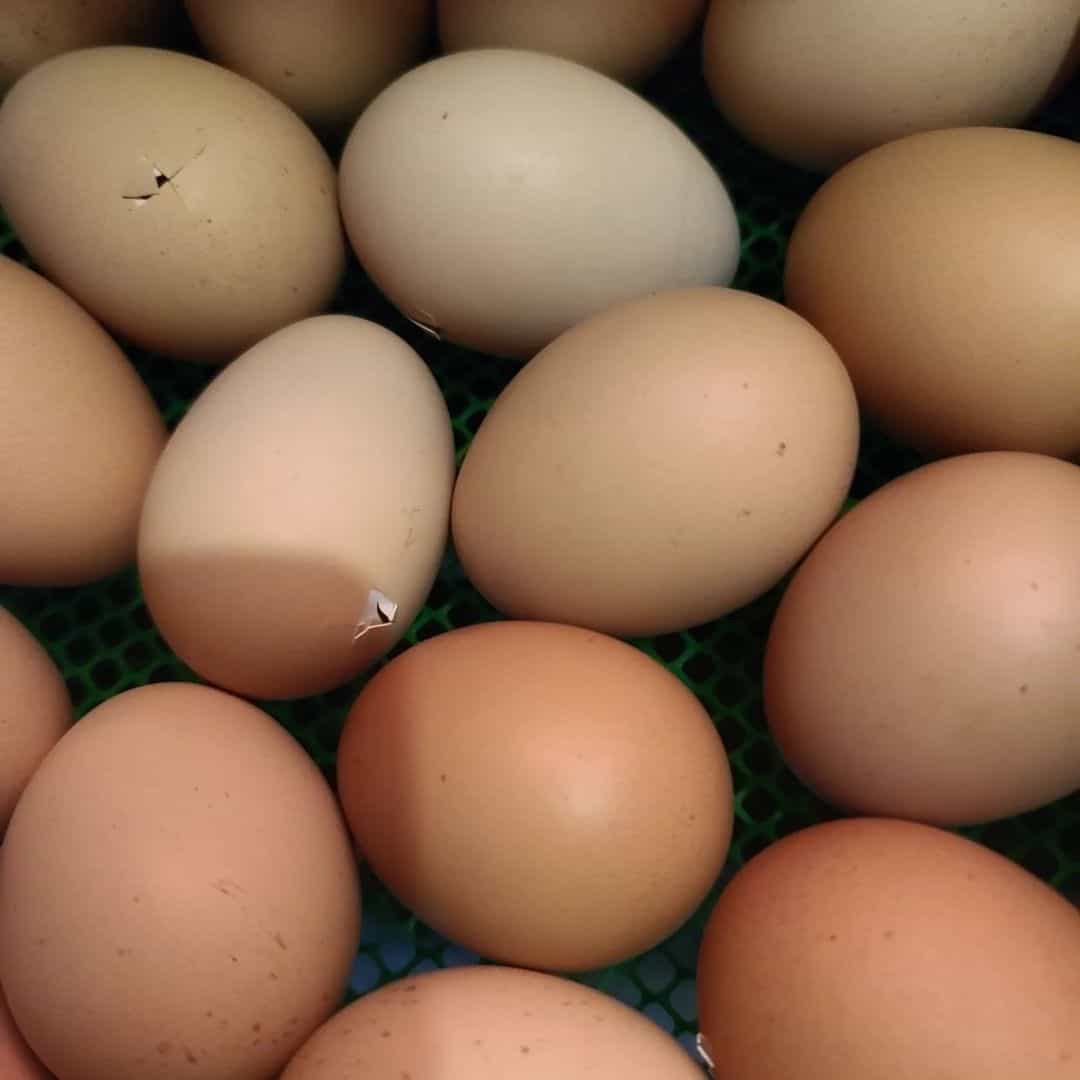
Many people think that because hens go on to lay eggs without mating with a rooster, they may as well be able to fertilize them on their own. But, unfortunately, that’s not the case. Hens are incapable of asexual reproduction.
Your hen will only lay fertilized eggs with the help of a rooster during a mating process called the cloacal kiss. So if you have a flock of chickens consisting of only hens and pulleys and are looking to get some fertilized eggs, consider adding a rooster or two.
How Do You Properly Incubate a Fertilized Egg?
You must place your fertilized eggs in an area that meets the right conditions for incubation regarding temperature, humidity, and ventilation. First, ensure your eggs are in an enclosed space with a temperature of 98.5 to 100.5 degrees Fahrenheit and 45 to 55 percent humidity at all times.
Bear in mind that you’ll need to increase the humidity to 75 percent during the final days of incubation. Also, as with all living things, your eggs need air to survive. So for them to hatch successfully, they need to incubate where there’s steady air circulation.
If you’re using a homemade incubator, you must constantly check to ensure an optimal environment for embryo development. See to it that your incubator is heated to the right temperature before placing your eggs in it. You can check your incubator’s internal temperature using a thermometer.
Likewise, occasionally top up water in a pan inside the incubator to keep the humidity at the right level. Then, turn each egg over gently on its side three or five times daily until the last few days of incubation.
Is It Okay to Eat a Fertilized Egg?
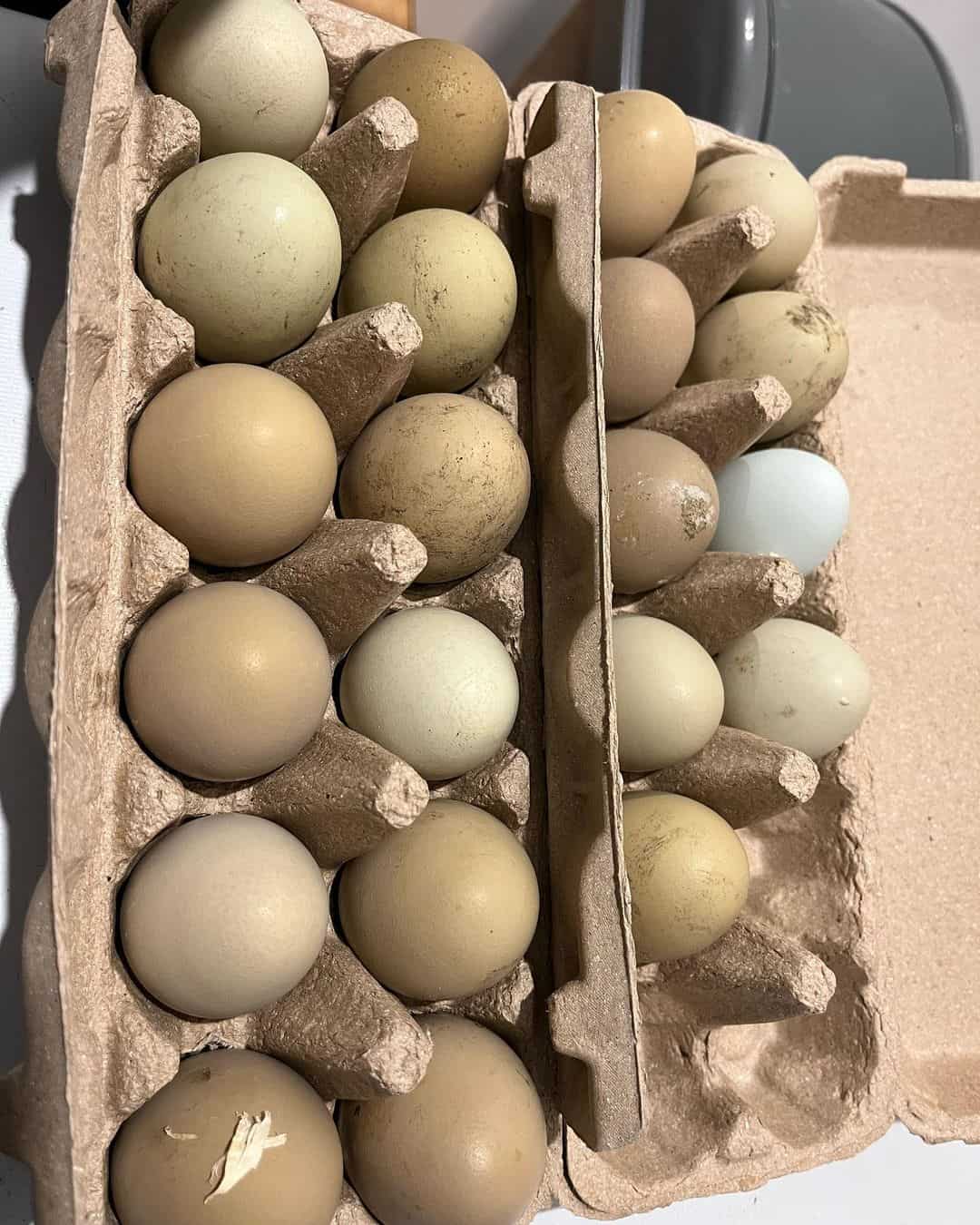
Of course! Fertilized eggs taste the same as non-fertile ones if consumed or refrigerated in the first 24 hours after they’re laid. We won’t advise you to eat a fertilized egg that’s already spent days in the incubator because that’ll be eating a partially developed embryo which isn’t only unappetizing but also unhealthy.
Also, if you find out an egg isn’t fertilized after being in the incubator for days, it’s best to get rid of it. This is because the environment within an incubator encourages the growth of several kinds of bacteria; therefore, the egg may be housing bacteria capable of causing harm to the body if ingested.
Conclusion
There you have it! You can now pat yourself on the back for learning how to identify a fertilized egg. Although this is just the first step to honing your poultry skills, it’s a good start. So if you think you have some eggs that may be fertilized, try the methods we discussed in this post and let us know how it went.




